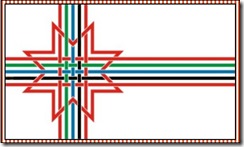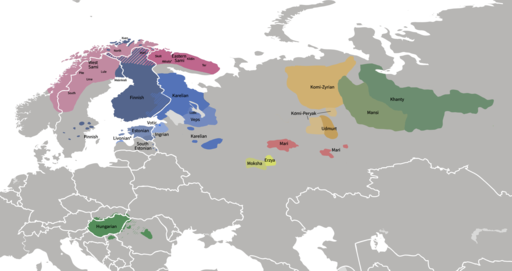The English version of this article after the Finnish version
Helka Riionheimo,
Suomen kielen professori
Itä-Suomen yliopisto
Ilkka Pakarinen,
Kirjoittelija,
Lapin maakunta
Hei,
Haluaisin tietää, onko suomalaiset ja suomensukuiset kielitieteilijät ajatelleet kehittää yhteistä kieltä kaikille ugrilaisille kansoille. Monet sukukielet ovat kuolemassa ja samalla sukukansojemme kulttuuri.
Israelissa elvytettiin jo kuollut hebrean kieli ja se elää kukoistuksen kautta. Tämä oli siellä tietysti välttämätöntä, koska juutalaisilla ei ollut yhtä valtakieltä, josta pystyi rakentaa identiteettiä.
Tietysti modernin kantauralin kehittäminen olisi haasteellista, koska esimerkiksi unkarin kieli on kulkeutunut hyvin kauas itämerensuomalaisista kielistä. Tämän tosiasian vuoksi yhteinen kieli voisi jakaantua kahteen linjaan moderniin kantauralin ja modernin kantasuomen kehittämisiin.
Tietysti monet pienten kielikuntien puhujat vastustavat tällaista ajatusta, mutta jos ollaan rehellisiä, niin oman identiteetin löytyminen tällaisen kielen kautta olisi varminta. Jos ajatellaan esimerkiksi karjalan kieltä, se on kieli, johon on sekoittunut venäjän kieltä, suomen kieli on ruotsin kielen ja viro saksan kielen saastuttamaa jne. Mitä omaa tällainen on?
Kaikkiin kieliin tietysti tulee sanoja toisista kielistä, mutta silti suomalais-ugrilaiset kielet ovat rakenteellisesti muuttuneet vuosituhansien aikana yllättävän vähän. Näin tätä kannattaa miettiä.
Terveisin
ilusamuli
alias Yelling Rosa,
kirjoittelija
https://yellingrosa.com/wordpress/
Tul täs mielhe
Miä uon vain tällai kirjottuja,
mut mius elläö urralmiel.
Se vuatii tulha esih
ja pajattua Urral
kansaih kelel.
© Yelling Rosa
Tul täs mielhe –runo on karjalan murretta, karjalan kieltä ja inkeroisen kieltä, mitkä on keitetty samassa padassa ja hämmennetyt perusteellisesti. Näin on saatu aikaan kielinäyte, joka ei oikeastaan ole mitään olemassa olevaa kieltä.
The Flag of Ugrians

The Flag of Ugrians
Uralic-speaking world
There are over 23 million people who speak the Ugric languages.
The most remarkable groups are Hungarians, over 14 million, Finnish, around 5.5 million, and Estonians, over 1 million.
In English
This is a letter to professor Helka Rionheimo:
Hi,
I would like to know whether Finnish linguists have considered developing a common language for all Ugric peoples. Many tribal languages are dying, and at the same time, the culture of our tribes.
The already dead Hebrew language was revived in Israel and is living through prosperity. To wake up in Hebrew was necessary because the Jews did not have a single language from which to build an identity.
Of course, developing a modern proto-language would be challenging because Hungarian, for example, has moved very far from the Baltic Finnic languages. Because of this, linguists could divide the common language into developing lines in the modern proto-Uralic and proto-Finnic development.
Of course, many speakers of minor languages oppose such an idea, but to be honest, finding one’s own identity through such language would be a guarantee. If we think of the Karelian language, for example, it is a language mixed with Russian, Swedish has contaminated Finnish, German has contaminated Estonian, etc. What is this?
Of course, words from other languages will appear in all languages, but Finno-Ugric languages have changed surprisingly little over the millennia. The standard modern Finno-Ugric language is something to consider for all Ugric people.
Regards
ilusamuli
alias Yelling Rosa,
author
https://yellingrosa.com/wordpress/
Tul täs mielhe
Miä uon vain tällai kirjottuja,
mut mius elläö urralmiel.
Se vuatii tulha esih
ja pajattua Urral
kansaih kelel.
© Yelling Rosa
25/6 -22
Tul täs mielhe poem is a mixture of the Karelian dialect, the Karelian language, and the language of the Ingrian, which I have cooked in the same pot and thoroughly stirred. This language soup is the result of no existing living language.
Just Pop in My Mind (Tul täs mielhe)
I am just an unknown writer
but inside of me lives the mind of Ugrians.
This spirit demand to come into the air of humans
and speak in the language of Uralic people.
© Yelling Rosa
25/6 –22
Origin of the Finns, Hungarians and other Uralians
One-minute lecture: Why is the number of Finno-Ugric peoples decreasing?
Read the Estonian World article about the subject. This article tells that Finno-Ugric peoples are the indigenous people of Europe. Before the migration period, Finno-Ugric languages were the main languages in Eastern Europe. The linguistic relations between all Finno-Ugric peoples were discovered by the Hungarian scholar, János Sajnovics (1733-1785).
The Finno-Ugric languages
This map is from Wikimedia.org
You can enlarge it by clicking on it.

